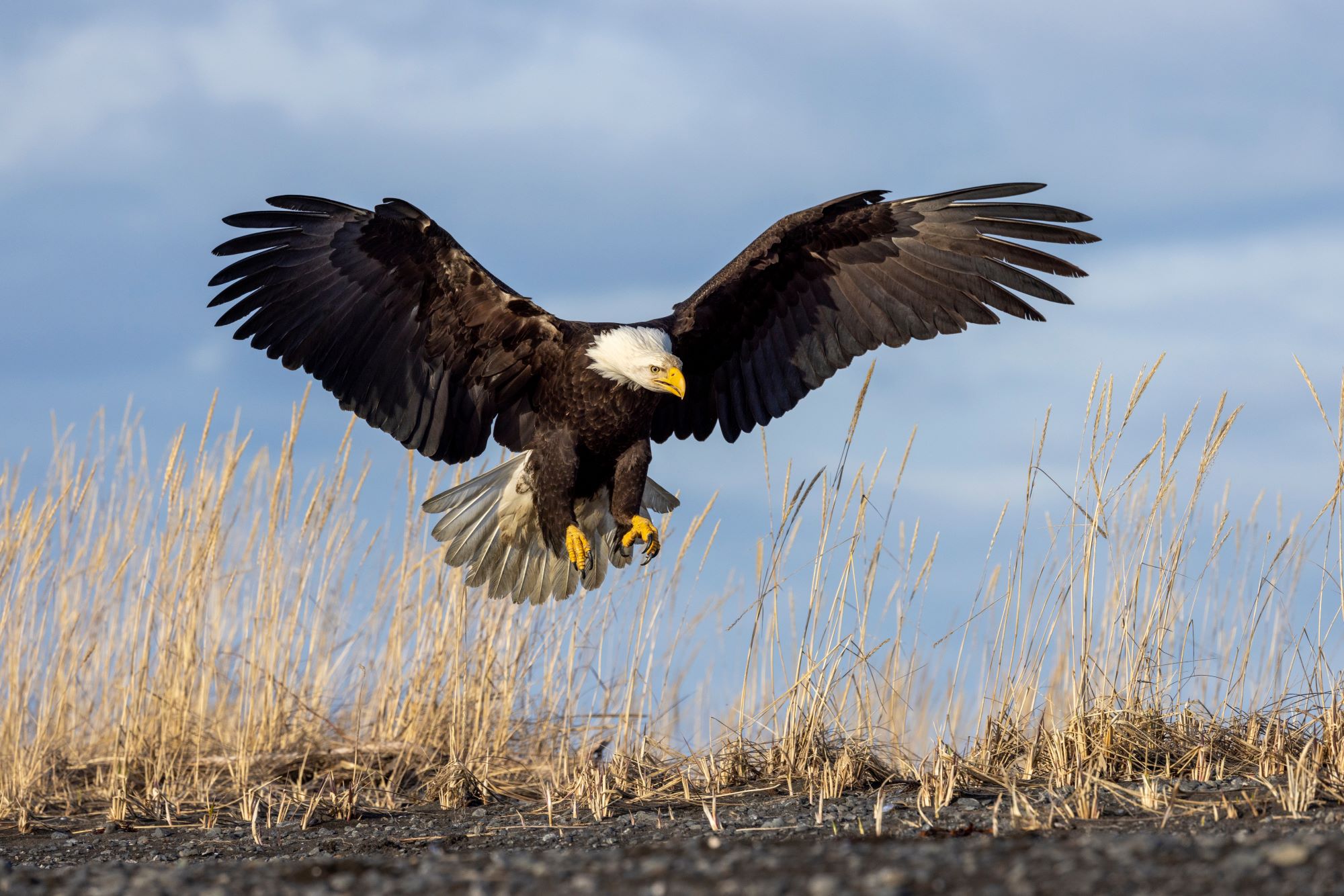
Eagles in Utah
Utah's diverse landscapes and abundant water resources make it an ideal habitat for two majestic eagle species: the Bald Eagle and the Golden Eagle. These raptors are not only a symbol of wildlife in Utah but also play a crucial role in the state's ecosystems. The Bald Eagle, with its iconic white head and tail, primarily frequents the water-rich areas of the state, particularly during the winter months. The Great Salt Lake and its surrounding wetlands are especially significant as wintering grounds, providing open water and plentiful food sources such as fish and waterfowl. Golden Eagles, on the other hand, are more commonly associated with Utah's arid and mountainous regions, where they can be seen soaring over open landscapes or perched in high vantage points.
Conservation efforts for both eagle species in Utah are vital. The Bald Eagle, once endangered due to pesticide use and habitat loss, has made a remarkable recovery nationwide, but still faces challenges such as habitat degradation and human disturbance. The Golden Eagle, while not endangered, also requires attention to ensure its habitats are preserved, particularly in the face of increasing development and recreational land use. Ongoing research, habitat protection, and public education are key components of conservation strategies in Utah. These efforts not only benefit the eagles but also the broader ecosystems and biodiversity of the state. The presence of these majestic birds is a barometer of environmental health and a testament to the success of conservation initiatives in Utah and beyond.
Species Profiles:

Bald Eagles: In Utah, the Bald Eagle, a symbol of American wildlife, is a celebrated winter visitor, drawing nature enthusiasts and birdwatchers each year. During the colder months, typically from November through March, Bald Eagles migrate to Utah from northern regions to take advantage of the state's abundant food resources and open water areas. These majestic birds, easily identified by their white heads and tails contrasted against dark brown bodies and wings, are primarily found around the Great Salt Lake and its associated wetlands, along with other significant water bodies across the state. These regions provide ideal conditions for the eagles, offering plentiful fish and waterfowl to feed on. The concentration of Bald Eagles in these areas during the winter provides a unique opportunity for wildlife observation, with the Farmington Bay Wildlife Management Area and Bear River Migratory Bird Refuge being notable hotspots for eagle sightings.
The presence of Bald Eagles in Utah during the winter is a significant indicator of the health of the state's aquatic ecosystems. While the species has recovered from the brink of extinction due to conservation efforts, including the banning of DDT and other harmful pesticides, they continue to face challenges. Threats such as habitat degradation, human disturbance, and environmental pollution remain concerns for their populations. In Utah, conservation efforts are focused on preserving and enhancing the quality of habitats crucial for the survival of wintering Bald Eagles. This includes maintaining healthy fish populations in lakes and rivers and ensuring that wetlands are protected from development and pollution. The ongoing success of these efforts is not only vital for the conservation of Bald Eagles but also reflects the overall health of Utah's natural environments and the effectiveness of wildlife management practices in the state.

Golden Eagles: Golden Eagles in Utah are a symbol of the state's wild and rugged landscapes, where they are established as year-round residents. These majestic birds of prey, with their impressive wingspans and striking golden-brown plumage, are most often found in the open, undeveloped areas of Utah's mountains and deserts. They prefer habitats that offer wide, open spaces for hunting and cliffs or large trees for nesting. Golden Eagles are solitary and territorial creatures, adept at hunting in the expansive terrain of Utah. Their diet primarily consists of small to medium-sized mammals, such as rabbits, ground squirrels, and prairie dogs, making them an integral part of the ecosystem as top predators. Their presence throughout the state, from the remote mountain ranges to the edges of the desert basins, highlights the diversity and richness of Utah's natural habitats.
Conservation efforts for Golden Eagles in Utah are crucial, focusing on habitat preservation and minimizing human disturbances. While not currently endangered, these eagles face various challenges, including habitat loss due to development, potential risks from wind farms, and reduced prey availability. Efforts to monitor and protect their nesting sites, particularly during the breeding season, are essential to ensure healthy populations. Research initiatives, often involving tagging and tracking individual birds, provide valuable data on their movement patterns, habitat use, and population dynamics. These efforts are vital not only for the conservation of Golden Eagles but also for maintaining the ecological balance within Utah's diverse environments, ensuring that these majestic birds continue to soar over the state's landscapes.